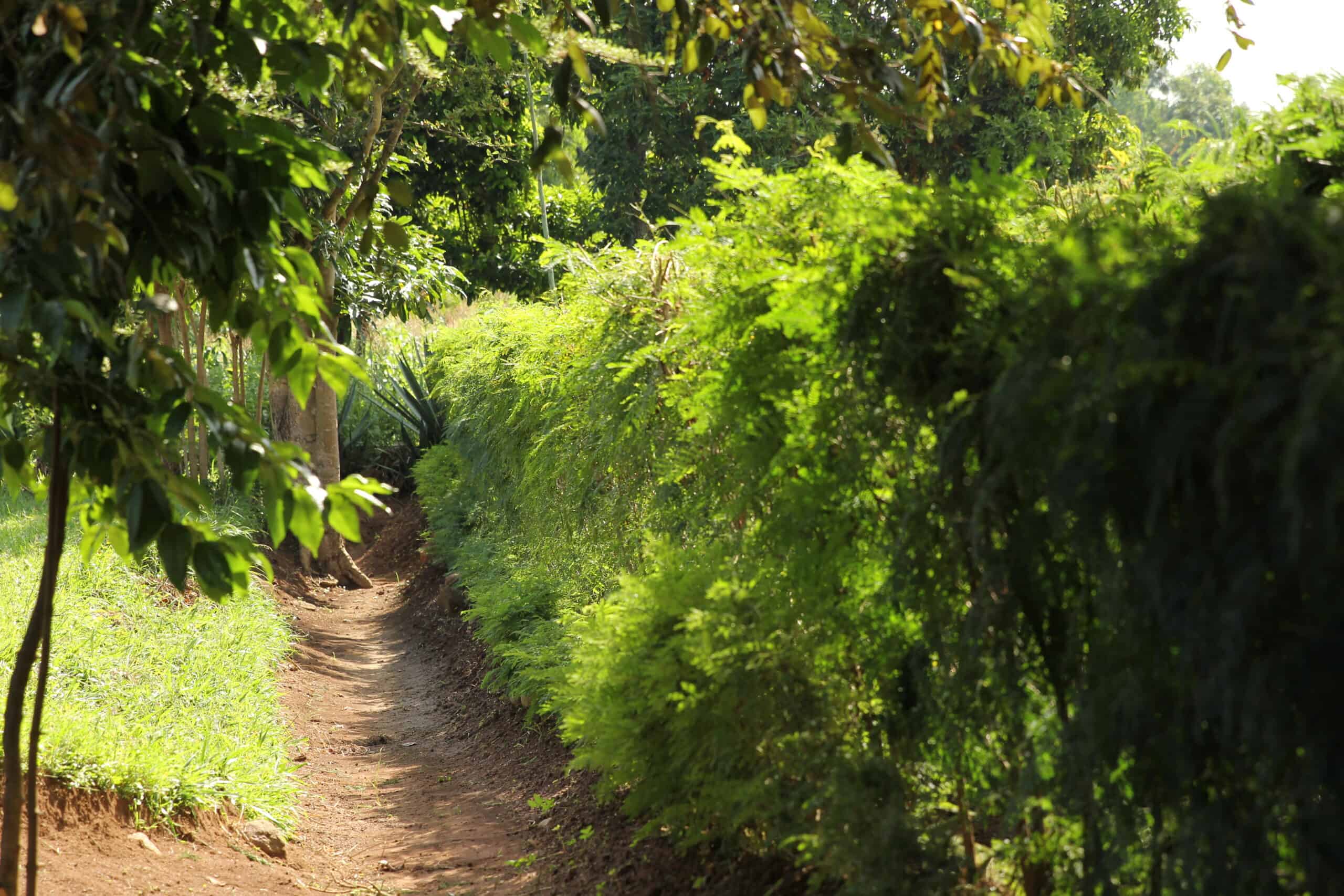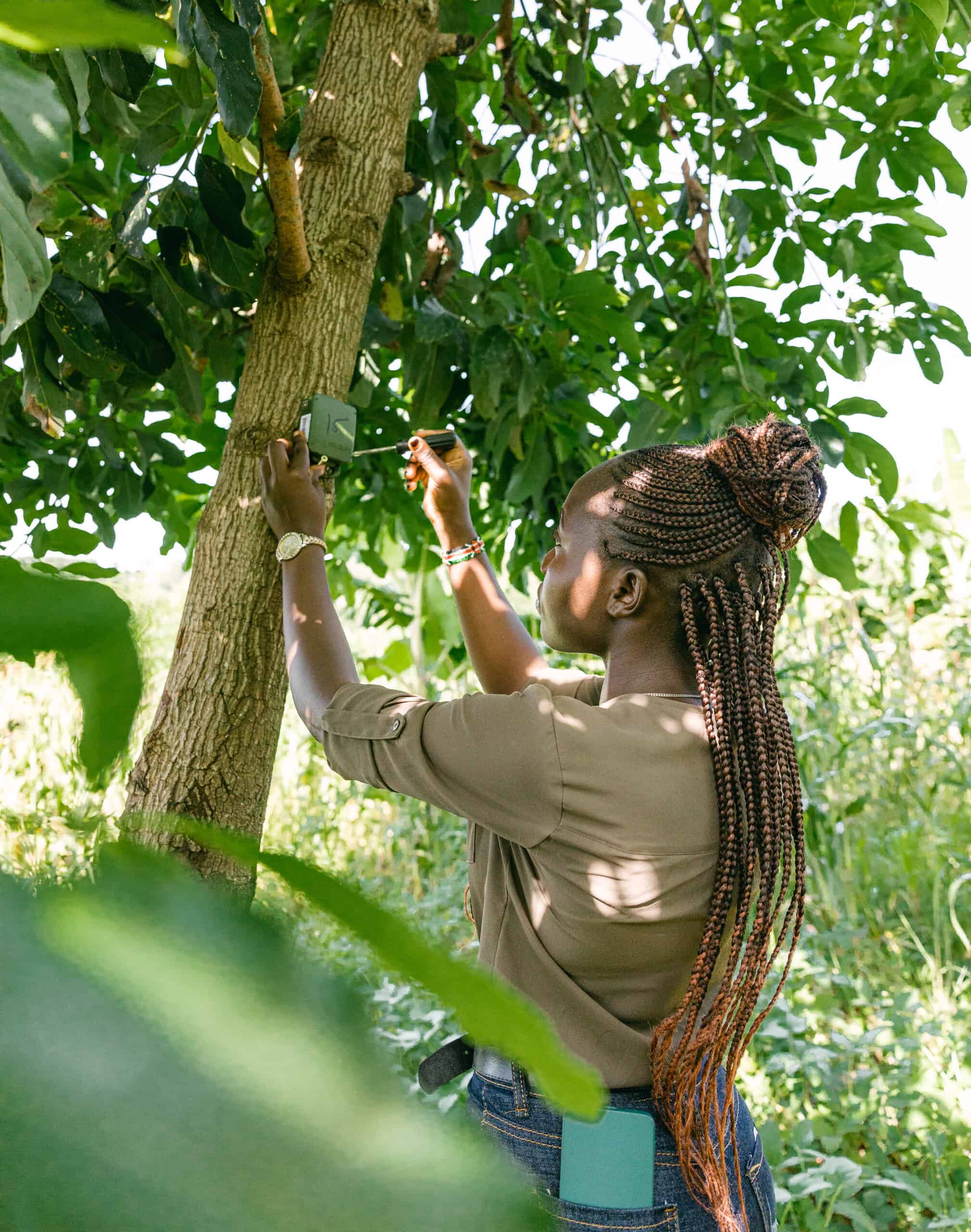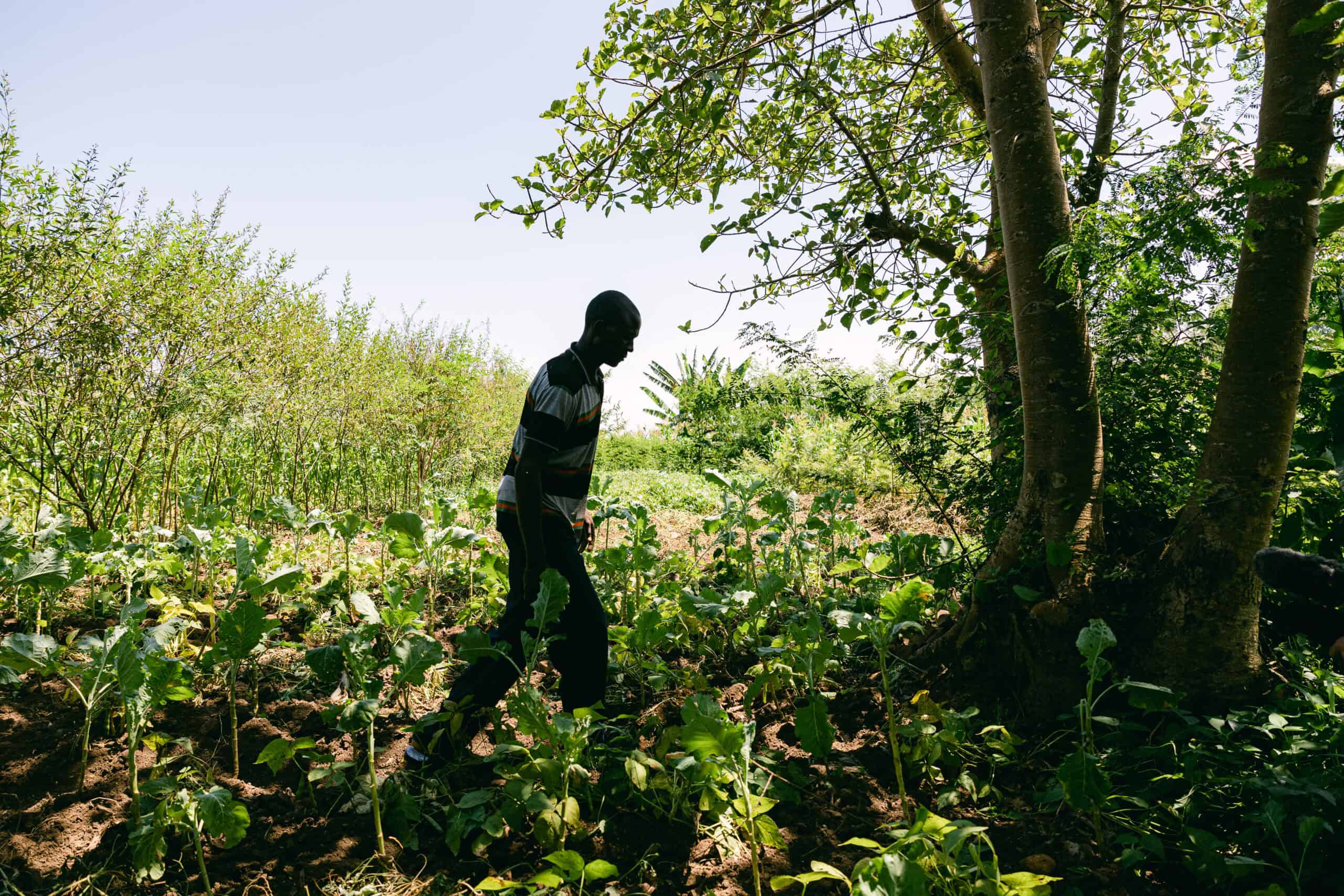This piece was originally published by Catona Climate and is written by Tracy Bain, VP, Monitoring & Engagement.
As I listen to the patter of raindrops…
and clinking of tiny hailstones on my roof, a chorus of bird calls rings out chirping and trilling throughout my office. Typically, when it’s raining (and especially when it’s hailing), the birds outside are quiet and taking shelter. But I’m not listening to birds in my own backyard — I’m immersed in the birdsongs of species native to western Kenya coming directly from bioacoustic recordings captured at our carbon agroforestry project.
Why am I listening to birds recorded half a world away?
Bringing more credibility and transparency to the carbon markets means pushing the boundaries of monitoring and reporting on our impact — not just the climate impact of mitigating GHG emissions, but also the effects of our projects on local communities and ecosystems. We take pride in being one of the few companies committed to that level of project integrity across the board.
So I’m listening because of what these birds can tell us about biodiversity — and because of what that tells about the quality and integrity of the carbon project where the recordings were captured: The Lake Victoria watershed region in Kenya.
Catona Climate partnered with Trees for the Future (TREES) to invest in their transformative Forest Garden program there. TREES works with smallholder farmers to provide training, seeds, seedlings and tools to enable farmers to transition their farmland from primarily maize and beans to thriving, diverse agroforestry systems that combine trees and shrubs with crops or livestock.
This means more fruits, vegetables and other crops for farmers and their families, as well as more carbon stored in the soil and trees on each farm. It also means more biodiversity…

As the name implies, Forest Gardens hold some similarities to a natural forest in that they provide habitat for many species of wildlife — particularly birds.
As a former field biologist, I find that the relationship between changes to agricultural practices and resulting changes to biodiversity is a fascinating hypothesis to be tested and studied.
The challenge is how to measure this at scale across thousands of farms at the same time each year, at a reasonable cost. Traditional biological studies can take many human and equipment resources plus lots of hours to collect and process data. We needed a solution that could scale with the size of the project, provide rapid results, and be replicable year after year.
What if we could “listen” for wildlife instead of having to count them?
Passive, digital bioacoustic monitoring and analysis was the answer.
The field of bioacoustics, where scientists record wildlife vocalizations (sounds) and listen to them to identify different species, has been evolving over decades. Researchers can deploy acoustic recorders in remote areas, for many days at a time or in large quantities, to collect audio data on their behalf. Originally, this approach presented some challenges: the data analysis was very lengthy and required many, many hours and a team of (usually) interns to listen to all of the recordings, then note how many species were identified and how many times they vocalized during each recording.
But Arbimon, a leader in the biodiversity monitoring space (and Catona’s partner), saw an opportunity to expand upon traditional bioacoustics and build out an automated AI-enabled spectrogram pattern matching and analysis workflow paired with a convolutional neural network (CNN) model that speeds up species identification and biodiversity composition analysis.
Come again?!
Let me break it down.

Arbimon and Catona scientists traveled to Kenya in May 2023 to deliver an in-person training for TREES’ technicians and monitoring teams on how to program and deploy the acoustic recorders in the field.
Recording devices were then deployed in the middle of Forest Gardens according to a sampling plan developed by biodiversity scientists. Since there were not a lot of high-quality recorded and validated bioacoustic data from western Kenya, Arbimon sent one of their expert field biologists (and wizard birder) to capture recordings and associated images of over 100 species of birds, amphibians, and insects.
A spectrogram is a visual representation of sound frequencies. Each bird or other vocalizing animal has a unique spectrogram pattern (wave pattern) that can be used to identify it in an audio recording. Scientists use a subset of spectrograms of particular species’ calls to train an AI model to automatically identify those species’ vocalizations in other recordings. Then, expert biologists double-check the model’s results to confirm correct species identifications and reject or fix incorrect ones. This is the initial, manual part of the AI process that ensures accurate and reliable results once the AI model is running and processing data on its own. The model can then be used on any additional recordings, meaning that as we get more data in future years, the AI model will be able to decrease the time and manual effort needed.
Ok, now to the exciting part — what we found out.
In its first year, the pilot bioacoustic study identified over 100 different bird, amphibian, and insect species across 70 Forest Garden sampling sites. Most species identified were birds — including the endangered grey crowned crane and migratory woodland kingfisher — as Forest Gardens provide excellent habitat for bird species (and they’re very vocal!).
The study also analyzed different environmental variables such as elevation, canopy height, distance to Lake Victoria, and age of the Forest Gardens to understand if these variables influenced species distribution and occurrence. The results showed that with greater canopy height (taller trees) and older Forest Gardens (more mature trees and diverse crops) there was a higher bird occupancy and probability of bird presence.

What does this mean?
It means that as farmers transition from traditional maize and beans farming to agroforestry systems, we’re starting to see increased levels of biodiversity as the Forest Gardens mature. The initial data supports our hypothesis that Forest Gardens provide habitat for wildlife, leading to increased biodiversity compared to traditional farming practices.
(More Trees) + (Diverse Crops) = More Wildlife!
What’s next?
Further analysis of the data showed that many of the bird species detected were those that prefer shrub or brush habitats, Acacia woodlands, and savannas. It’s expected that as the Forest Gardens continue to grow and mature, these microhabitats will attract more forest-specialist bird species — another sign that Forest Gardens could provide habitat for native forest dwellers in a region where natural forested areas are greatly depleted.
Over the next few months, TREES technicians will again redeploy the acoustic recorders throughout the Forest Gardens. They’ll also expand the pilot study to include additional Forest Garden sites, control sites (farms not enrolled in the Forest Garden program), and natural areas in order to train the AI models on forest-specialist bird species that may not yet be found in the Forest Gardens.
This bioacoustic pilot study will take place over four years to enable monitoring and research of biodiversity change over time as Forest Gardens grow and mature. We’ll continue to study the results of each bioacoustic monitoring event and use the insights gained to continue to test our hypothesis and inform data-driven biodiversity impact measurement through this carbon project.
This is a powerful example of how our approach goes above and beyond typical project investing. We collaborate with our partners to drive meaningful impact beyond climate. We seek out innovations that allow us to quantify and transparently report on critical project outcomes like changes to biodiversity. And we embrace what we see as our obligation to keep pushing the boundaries of what’s possible — leapfrogging existing norms to set new industry standards for quality, transparency, and integrity.